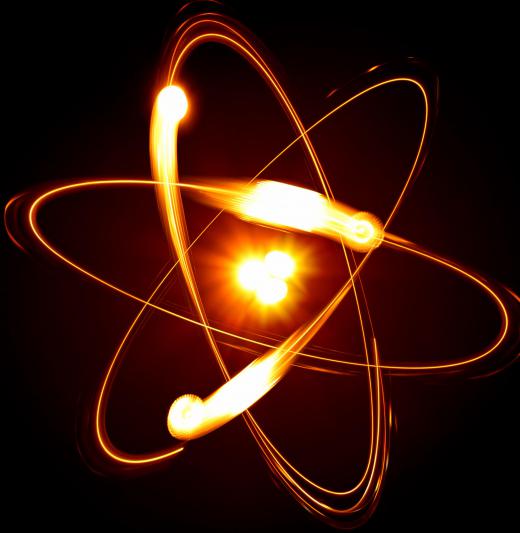What is a Beta Particle?
 Michael Anissimov
Michael Anissimov
The beta particle is a form of ionizing radiation related to other common forms of radiation, alpha particles and gamma rays. The beta particle is a high-speed electron or positron released from a degenerating radioactive nucleus. Being medium-energy and low mass, beta particles are one of the least damaging forms of radiation, but still a very significant health concern. Beta emitters include strontium-90, potassium-40, technetium-99, tritium, and carbon-14.
Beta particles have equivalent properties to electrons, but much higher energies than typical electrons orbiting the nucleus. Though beta particles are not themselves radioactive, they cause damage ballistically, breaking chemical bonds and creating ions which do damage to tissue. The cause of beta emission is an excess number of neutrons in the atomic nucleus. When there are significantly more neutrons than protons in a nucleus, the neutrons degenerate into protons and electrons, which are ejected from the nucleus at high speeds. This increases the atomic number of the atom and also increases its stability, an example of natural atomic alchemy which gives rise to a new type of atom.

Henri Becquerel discovered beta particles late in the 19th century. In 1900, he showed that beta particles, before thought to be distinct from electrons, were actually the same thing. The fact that beta particles were treated distinctly prior to 1900 is probably part of the reason why they have their name rather than being called "energetic electrons" or something similar.

Like other radioactive substances, beta particle emitters are used in radioisotope thermoelectric generators, used to power space probes, not to mention remote Russian lighthouses. These lighthouses are actually a significant environmental concern, as they contain more strontium than what was released in the Chernobyl fire.
Tritium and phosphorus-32 are weak beta emitters that are used for commercial applications, such as radiotracers and glow in the dark paint. Tritium is produced through neutron bombardment of lithium, and has such low radioactivity that a Geiger counter cannot detect its presence. Sometimes tritium gets into water, in which case patients are told to drink 10 pints of beer or water per day, to wash out the system.
AS FEATURED ON:
AS FEATURED ON:












Discussion Comments
where do beta particles come from?
what is the main basis behind conversion of a neutron to an electron? does it align with mason's theory?
i still don't understand what a beta particle is.
we don't uinderstand what beta is?
Hi Im student in Fourth year of Zambales National High School..
we can make any investigatory project all about Gamma Rays?
Would it be possible to give the patient something to balance out the chemical bonds so they won't break during the radiation and create the ions that are harmful to the skin?
explanation about attenuation of beta particles in aluminum..
Post your comments